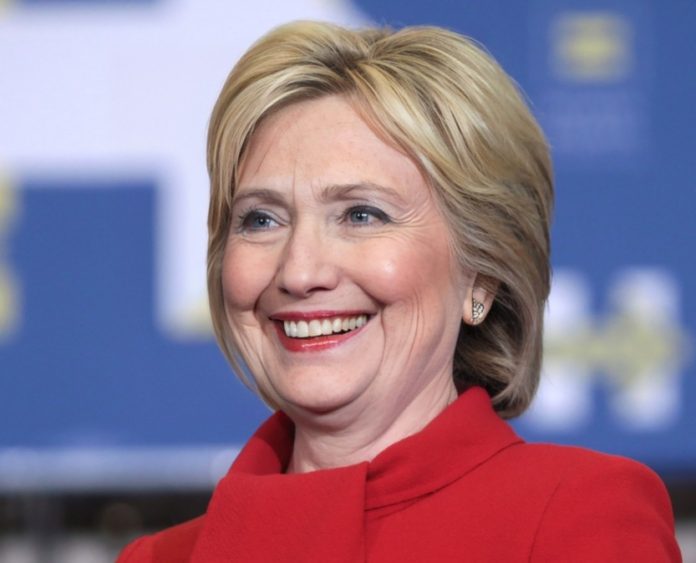When President Obama endorsed Hillary Clinton after she clinched the required number of delegates to become the Democratic Party’s presumptive presidential nominee, he stated that he thought there had never been ‘someone so qualified to hold this office [of President]’ as her. That was a big call, and I suspect a few people may disagree with the President’s assessment.
Notwithstanding this presidential hyperbole, Hillary Clinton has had many years of public service, including as Secretary of State from 2009–2013 during President Obama’s first term. Accordingly, let’s examine (as best as one can) what we could expect in the foreign policy sphere under a possible Clinton administration.
Surprisingly for someone with her foreign policy credentials and who boasts the one million miles travelled and 112 countries visited as Secretary of State, Clinton hasn’t made many statements on that role during her campaign. Of course, that may well be because she wants to distance herself from Obama’s poor standing in foreign policy—according to a recent poll, the president has a disapproval rating of almost 50% on that policy area.
Another reason why Clinton has been downplaying her foreign policy experience during the campaign is because there were no notable achievements under her watch at Foggy Bottom. She confirmed that as much herself when she was unable to identify her major accomplishments in a 2014 interview. And when one does think of Clinton’s tenure at the helm of the State Department, one tends to remember the failed ‘reset’ button with President Putin, her suggestion that Syrian President al-Assad may be a reformer, and the disaster of Benghazi—occasions Clinton would probably rather forget.
A majority of the statements Clinton has made since hitting the campaign trail have been disappointingly lackluster, with little policy content. The most notable address to date was the ‘major’ foreign policy speech given by Clinton in San Diego. It was meant to confirm her national security credentials and demonstrate her superiority vis-à-vis Trump in that domain. Instead, it was a missed opportunity and really a faux foreign policy speech attacking Trump’s confused and confusing thinking on foreign affairs. It was a speech all about Trump—not Clinton.
It was expected that Clinton would deliver a thoughtful and considered foreign policy framework for her first term as president. Instead the speech had virtually no concrete ideas about how she would approach the big issues that would be waiting for her on the first day in the Oval Office. Even Trump had offered more specific policy suggestions during his own speech in April, albeit many were contradictory and erratic.
Still, Clinton did stress in her speech the importance ‘of strong alliances; clarity in dealing with our rivals; and a rock-solid commitment to the values that have always made America great’. While that’s very much a motherhood statement, it’s nevertheless good news for Australia and the region which is becoming increasingly tense. It also dovetails nicely with Clinton’s known interest in Asia and the Indo–Pacific. Her first trip overseas as Secretary of State was to Japan, Indonesia, South Korea and China—four countries which will be key players in the resolution of two of the thorniest unresolved regional issues, notably the construction of heavily-armed man-made islands by the Chinese in the South China Sea and the continued nuclearisation of North Korea. Based on some of Clinton’s past statements, there’s a sense that she would be tougher on China than Obama has been in the last seven years.
A greater assertiveness vis-à-vis China would fit with the Obama administration’s Asia ‘pivot’ or rebalance for which, to most observers, Clinton is considered the main architect. But while the security pillar of the ‘pivot‘ has been more or less on track, the trade pillar, the Trans-Pacific Partnership (TPP), hasn’t been doing so well. Back in November 2012, Clinton had referred to the TPP as the ‘gold standard in trade agreements’. Since then the TPP has fallen victim to the presidential campaign. Pressure from the unions and Bernie Sanders’ pull to the left have forced Clinton to back away from support for the TPP. Not only has she barely referred to it, but when she does it is to criticise it for failing to ‘raise wages and create more good jobs at home‘. So don’t expect Washington to sign the TPP too soon, if at all, under a Clinton administration. And that would pretty much mean the end of the TPP.
So would the world, and specifically the Indo–Pacific region, be a safer place with Clinton as president? Not necessarily so. She has repeatedly reminded everyone that she would have been tougher than Obama on Syria by arming rebels earlier in the civil war and would have taken tougher measures on Russia following the annexation of Crimea. She’s naturally more hawkish than Obama, who is desperate to be remembered as the president who ended America’s campaigns in two wars (or at least tried to). Moreover, as the first woman president she would want to dispel any (mis)perception that she would be softer than a male president. Some observers believe that this desire to over-compensate could be Clinton’s greatest weakness. So while the world, especially the Indo–Pacific region, would indeed not necessarily be more peaceful under a President Clinton than under Obama, it certainly would be more predictable than under a President Trump.
A version of this article also appeared in The Strategist, a blog for the Australian Strategic Policy Institute (ASPI)




